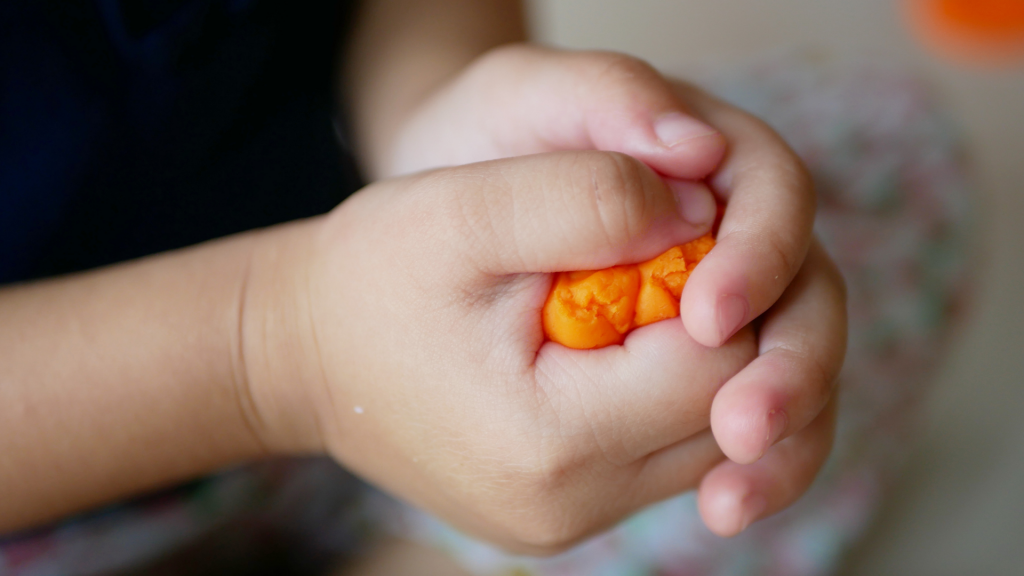
Playdough is one of our Educators’ favourite activities and has been a staple of the Early Childhood Education and Care setting for decades. Why?
Because of the range of developmental benefits it offers to children.
Playing with playdough provides sensory stimulation and is a very calming experience.
It also provides proprioceptive input.
Proprioception is a sense of where your body is in space, which children require in order to develop skills such as balance, movement and how much muscle force to use.
When children use their hands, fingers, and tools to pound, push, poke, shape, roll and cut the playdough, they are developing the small muscles in their fingers and hands.
Through these manipulations, children also develop their hand-eye coordination.
These are both critical areas of physical development for writing, drawing, playing, eating and many other purposes.
Using playdough supports children’s capacity to be creative and develop their imagination skills.
Creativity is a very important life skill that helps children develop strategies to overcome problems and find solutions.
Playdough offers open-ended play, which stimulates curiosity, another important life skill and character strength.
Creating with playdough supports children to feel competent and proud of their accomplishments.
It is a great outlet for children to express their emotions.
Playing with playdough in small groups and/or with adults presents lots of possibilities for talk and discussion, playing collaboratively, problem solving and planning with others.
Through playdough, children build their vocabulary and practice listening to and talking with friends, siblings, and adults.
When making a batch of playdough, children start to understand the purpose of written language. Following the recipe instructions helps children to connect written and spoken words, to learn that writing can be used for different purposes.
When children play with playdough, they are measuring, counting, sorting, classifying and learning about shapes, weight and volume.
Playdough is also an excellent tool for teaching the alphabet, by having children form letter shapes with the playdough or experiment with alphabet cutters.
Ingredients:
1 cup of flour (any kind)
1/4 cup of salt
1 Tablespoon cream of tartar (optional)
1/2 cup warm water
1/4 teaspoon non toxic food colouring powder
(Note: if you don’t have colouring powder, you can also use a drop of non-toxic gel or liquid colouring. Just make sure you mix it thoroughly!)